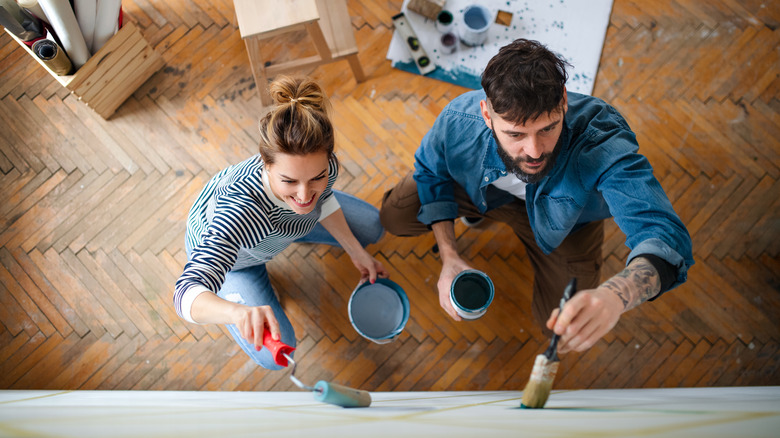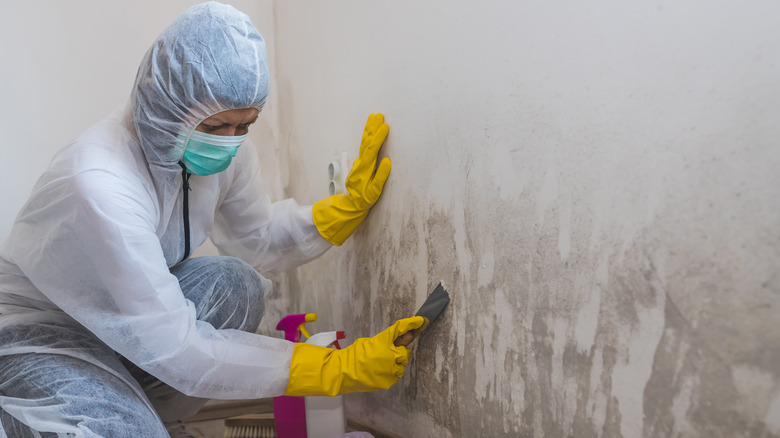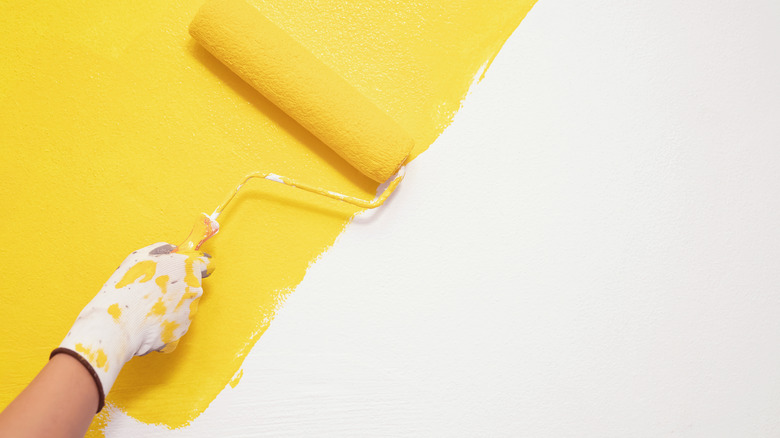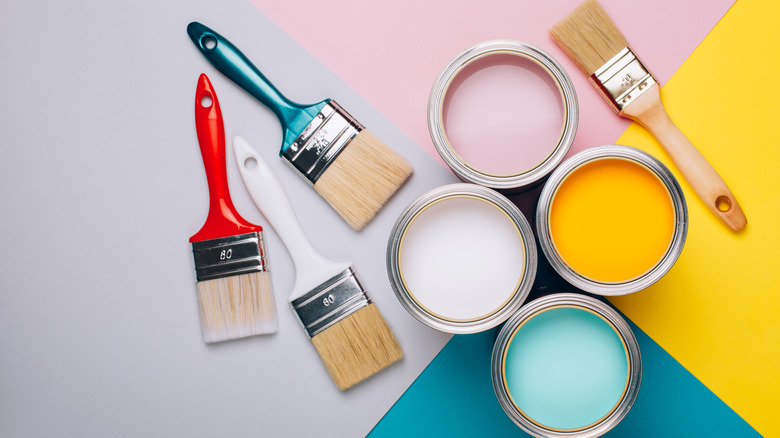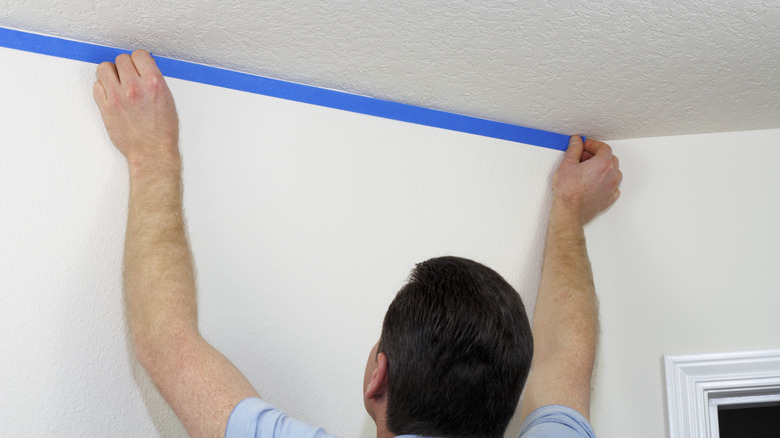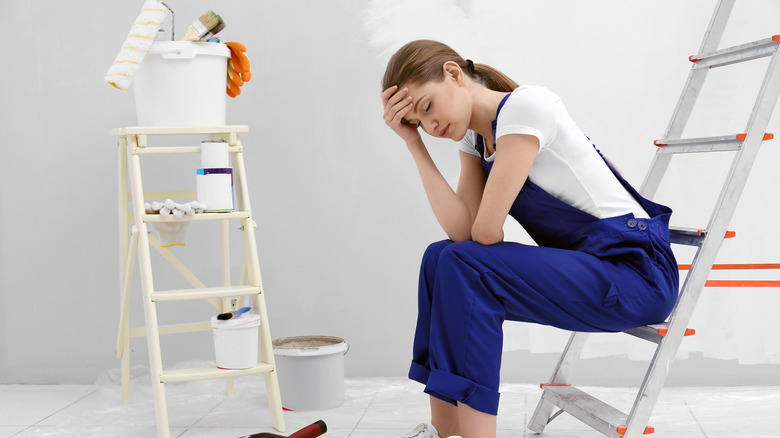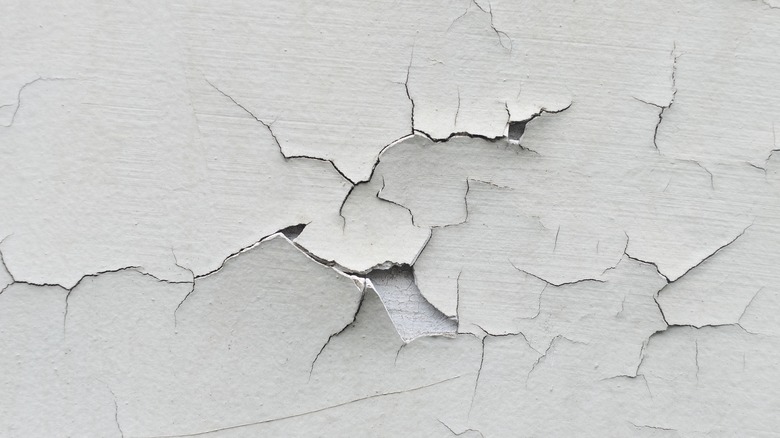Mistakes Everyone Makes When Painting Their Home
The color and intensity of your wall paint have effects on your mood. According to Neighborhood Painting & Restoration, red-painted walls set the tone of energy and passion, green brings in the vibes of nature, blue calms the soul, and yellow makes you cheerful. So, it's a no-brainer that when our walls begin to lose their colorful charm, we are more likely to take quick action and repaint them.
Similarly, for new homeowners or tenants who are just moving in, painting the walls is often the most significant and foremost home-sprucing activity to check off the list. But defining the beauty of your house and the kind of energy you want within it with paint is not a walk in the park. There are hurdles and roadblocks that must be avoided for the best results.
If you've read our guide on the mistakes to avoid when buying paint and have been able to make the right purchase, then you have just one more hurdle to jump — which is avoiding the mistakes everyone makes when painting. We will be revealing those painting mistakes to you over the next few minutes.
Skipping the prepping phase
The condition of the wall to be painted will affect both the process and, most importantly, the results of your painting job to a great length. Experts at the Premier Painting Company explain how painting a wall with preexisting wall imperfections such as cracks, stains, scratches, holes, and oil smudges can cause your paint to chip off or turn out ugly and uneven over time.
On the flip side, as discovered on Bear Mountain Custom Painting, prepping your wall before painting will increase the durability of your painting products, promote even distribution, enable the paint to cure properly, and give your wall a flawless, supersmooth finish.
Per the Premier Painting Company, prepare your wall for painting, wash off dirt with soapy water, repair cracks by scraping loose wall material and applying crack fillers, eliminate insects from holes and fill them, and finally apply primer to the wall for smoothness.
Using the wrong painting brushes and rollers
According to Architectural Digest, you're likely to work with the wrong rollers and paintbrushes if you don't have the know-how to choose the ones that are perfect for the kind of paint you want to use and the type of painting job on your plate. And even if you do know the things to look out for when buying these painting tools, the desire to cut costs may get in the way and cause you to wind up with cheap ones.
You should note that working with cheap or wrong brushes and rollers will complicate the process, causing you to expend time and energy and ruin the quality of the final results. To avoid this, you can follow the handy-dandy guide on choosing the right paintbrush on Dengarden and the process of selecting a painting roller on This Old House.
Applying the wrong paint
There are different types of paint, and each is uniquely formulated to be used on a specific kind of wall. Recently, Kitchens Unlimited discovered that people who use the wrong color for their interior painting always wind up with unsatisfactory results, no matter how good the painting technique.
As explained by Let It B, applying oil-based paints to the surface of a concrete wall will result in saponification. This means that the applied paint won't sit right on the surface as it should, and, in most cases, it will remain sticky and wet for days.
Luckily, the professional painters at Hömm Certified Painting Systems have shared the five tips to avoid when choosing the wrong paint. They say that you should have a painting objective, plan before painting, consider lighting, choose the right type of finish (gloss or semi-gloss or flat), and avoid going overboard when attempting to make everything match.
Forgoing tapes or using them incorrectly
Disregarding painter's tapes in your plan can be the gravest mistake you can make, a recipe for disaster. According to the Premier Painting Company, painter's tapes help you protect the areas you don't want to be stained with the paint during the process. Sites such as doorknobs, light switches, ceiling corners, windows, and doors should be masked with painter's tapes when you're painting walls.
Real Simple, however, warned against leaving these tapes on for extensive periods, explaining that tapes left on the wall for more than one hour can become glued to the surface and cause the freshly applied paint to peel off during removal. But they shared a remedy, stating that tapes left for too long could be successfully removed by peeling the edges with a blade or heating the tape with a blowdryer to render the adhesive material non-sticky.
Not buying enough paint for the job
Imagine your can of paint running out on you just when you're halfway through revamping your kitchen walls. Now, it's not just about the disappointment but the series of troubles you'll have to deal with to ensure the job is complete to perfection. For instance, OOLA explained how frustrating it could be for anyone to have to take another trip to the paint shop. They also mentioned that since each can of paint is made at a different time, the next one you'll buy may not be of the same pitch as the previous one. Or, in the worst case, the particular paint you purchased is out of stock, and you'll have to buy a different brand. This will make the color and tone of your wall inconsistent.
But how do you make sure you buy the right amount of paint on the first trip? Do it the easy way by using the free online calculator on Resene to determine the volume of paint needed to revamp your space.
Wrong timing
According to the Real Simple, we all should be mindful of the weather condition before painting. Some paints do not perform well at extreme temperatures, some do not dry quickly when the humidity is high, and others dry unevenly and crack when applied during winter.
The Premier Painting Company also explained how the atmosphere is filled with dust particles and other contaminants during some seasons (summer especially) and how these impurities can ruin the beauty of freshly painted walls. Now the big question is, when should you paint your walls?
The experts at VanDerKolk Painting have revealed that winter is the best period to fix your painting job. They explained that the low humidity of winter allows your paint to dry faster before any contaminant can land on it. Besides, in the winter, you can open your windows to let out the fumes from your paint, unlike in summer when you want to shut the windows against the prevailing dust.
